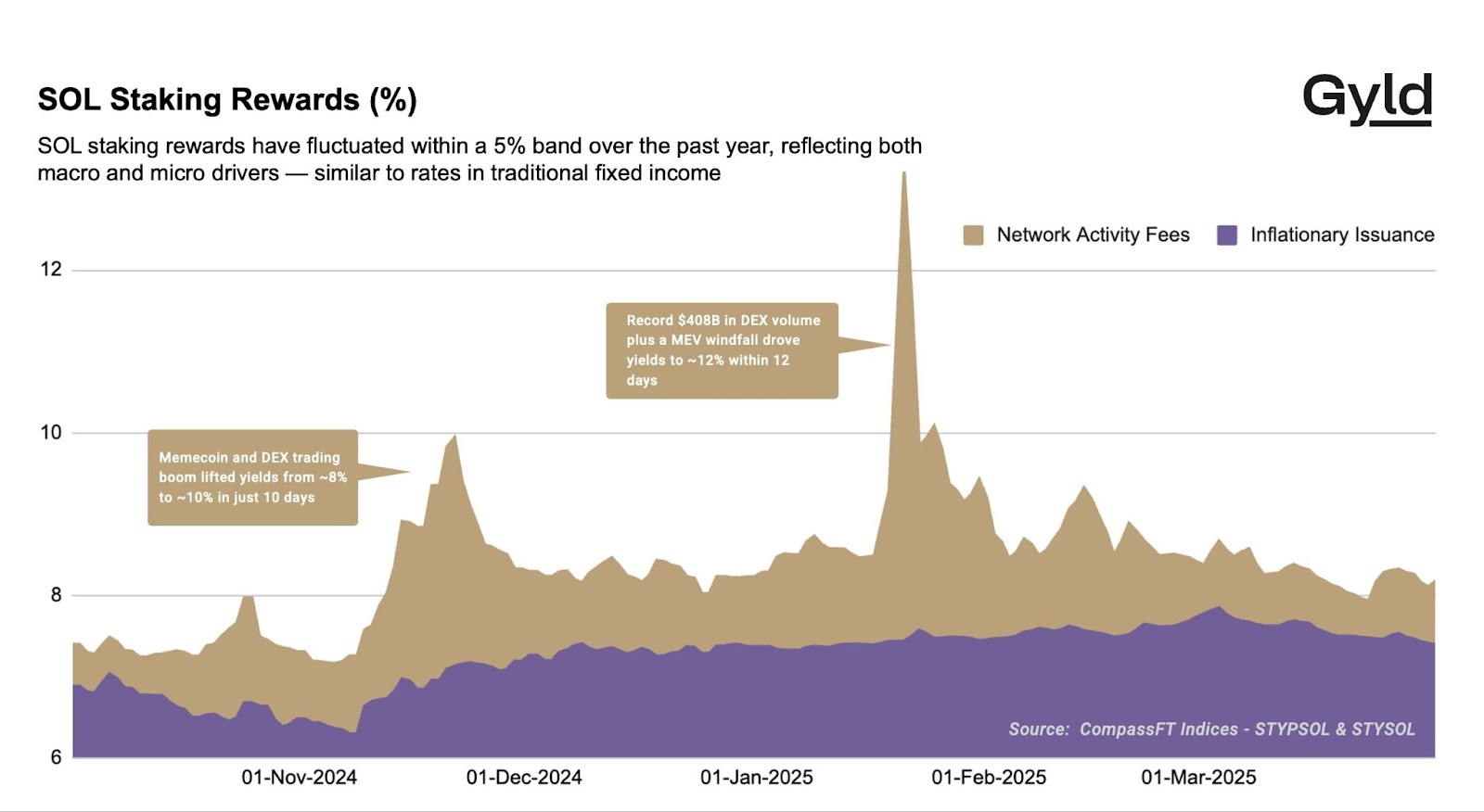
New asset classes don’t appear by decree — they emerge when size, volatility and diverse participants converge. When that happens, a set of risks and rewards becomes too important, too dynamic and too widely traded to ignore. That is the point at which investors stop treating it as a feature of the market and start recognizing it as an asset class.
Staking is approaching that point.
The scale is undeniable. More than half a trillion dollars of assets are staked across proof-of-stake networks. Ethereum alone accounts for over $100 billion, while Solana, Avalanche and others add to the base. This is no longer experimental capital. It is large enough to support liquidity, professional strategies and eventually the kind of secondary products that only form when an ecosystem is deep.
The volatility is equally clear. Staking returns move in ways that matter. Solana’s rewards have ranged between 8% and 13% over the past year. Ethereum’s exit queues, a structural safeguard for network stability, have been stretched to weeks under current conditions as a major staking provider exited its validators. Slashing and downtime risks layer on idiosyncratic shocks. These frictions may frustrate investors, but they also create the conditions for risk premia, hedging tools and ultimately markets to emerge.
And then there are the participants. What makes staking compelling is not just who is involved, but how their different objectives will push them into the market. ETPs and ETFs, bound by redemption schedules, need to manage staking exposure within defined liquidity windows. Digital asset treasuries will compete on net asset value, actively trading the staking reward term structure to beat benchmarks. Retail stakers and long-term holders will take the other side of liquidity, willing to sit through entry and exit queues for higher returns. Funds and speculators will take directional views on network activity and future reward levels, trading around protocol upgrades, validator dynamics or usage spikes.
When these forces interact, they create price discovery. Over time, that is what will make markets efficient — and what will turn staking from a protocol function into a fully fledged asset class.
The trajectory is starting to resemble the path fixed income once took. Lending began as bilateral, illiquid agreements. Over time, contracts were standardized into bonds, risks got repackaged into tradable forms and secondary markets flourished. Staking today still feels closer to private lending: you delegate capital to a validator and wait. But the outlines of a market are forming — term-based products, derivatives on staking rewards, slashing insurance and secondary liquidity.
For allocators, this makes staking more than just a source of income. Its returns are driven by network usage, validator performance and protocol governance — dynamics distinct from crypto price beta. That opens the door to genuine diversification, and ultimately to a permanent role in institutional portfolios.
Staking began as a technical function. It is becoming a financial market. And with size, volatility and participants already in place, it is now on the verge of something bigger: emerging as a true asset class.

免责声明:本文章仅代表作者个人观点,不代表本平台的立场和观点。本文章仅供信息分享,不构成对任何人的任何投资建议。用户与作者之间的任何争议,与本平台无关。如网页中刊载的文章或图片涉及侵权,请提供相关的权利证明和身份证明发送邮件到support@aicoin.com,本平台相关工作人员将会进行核查。




